News
Carbon Crypto Guide Klimadao Carbon NFTS and Carbon Tokens
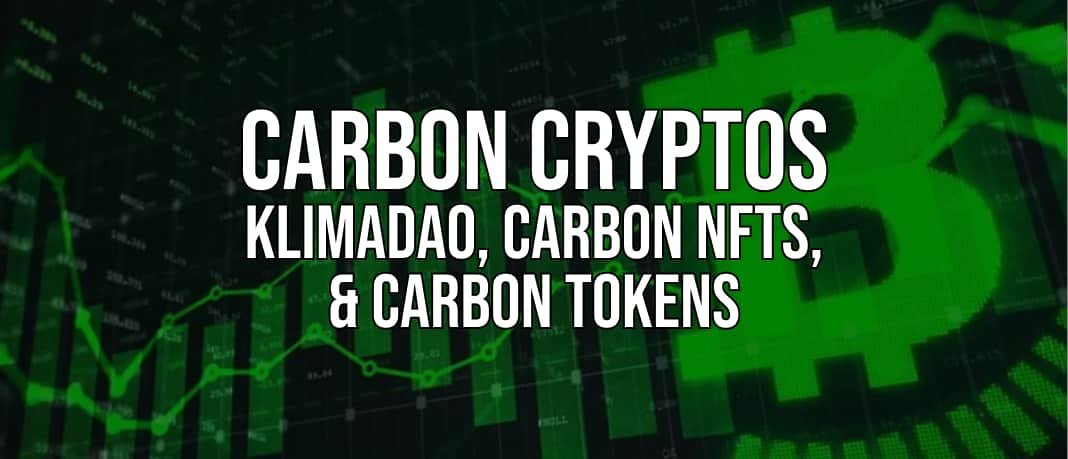
It can be easy to assume that blockchain is bitcoin, and bitcoin is blockchain. After all, bitcoin dominates the crypto airwaves; it makes a certain amount of sense to assume that blockchain begins and ends there.
The reality is far different. Bitcoin is important, to be sure, but only as a symbol of far greater things to come. Like Ford with the early automobile industry; even if Ford Motors had failed in the 1930s, or after WWII, or even in 2008 – the broader automobile and manufacturing industry would have been largely unaffected.
Blockchain powers Bitcoin, and it’s the success or failure of blockchain technology that will ultimately have a far greater impact than any one cryptocurrency.
1. What is a Blockchain?
A blockchain is a digital ledger of transactions that can’t be tampered with by any one entity because of its decentralized design. A blockchain is made up of blocks, which are chained together cryptographically. Each block contains a hash pointer (a number) linking it to a previous block, a timestamp, transaction data, and fees.
The combination of these components – the hash pointer, timestamps, and transactions – make up a record or block.
These records are linked like pearls on a string, forming a chain. This chain gets longer every time a new block is added, making the blockchain bigger over time.
Publicity and security
The prospect of a seemingly-endless stack of blocks towering into the digital heavens might be a bit intimidating, but there’s an immense amount of real-world value in it.
Because new block are inextricably linked to the old ones, old data can’t be changed. Previous entries into the ledger are therefore immutable. In addition, the total blockchain functions as an authentic record of all transactions on the chain. The actions of individual wallets, or the sale of individual items, can be easily traced through the blockchain.
Each crypto wallet has a public address and a private key. Users access the blockchain through wallets. The address receives cryptocurrency and other digital assets, sends them on, and can store them, and it’s the address that’s identified in the distributed ledger.
At the same time, private keys secure each individual wallet.
Users can hold assets securely in a wallet while the wallet’s address is publicly visible. The idea is similar to a postal system. Your postman knows where you live and how to pick up and deliver mail, but he doesn’t know what you do at that address.
Decentralized control
Blockchain structure raises a couple of important questions. With everything visible to the public, how are blockchains secured? What guarantees trust in the network?
One way in which blockchains can guarantee security and ledger accuracy is by limiting access. Blockchains can be permissioned or permissionless. Permissioned blockchains require users to obtain special permissions before they can use them. Blockchains designed to be used by one institution are a good example – trust is guaranteed by controlling who has access.
On the other hand, public blockchains face the very real problem of guaranteeing security and trust with a huge number of distributed users, including at some potential bad actors. That’s where cryptography comes in. The cryptographic hash – an algorithmically-generated number – secures each new block on the chain. Change the block, and you change the hash. And if you change the hash, you invalidate the chain, and the change is instantly viewable.
Cryptography guarantees security despite (and perhaps due to) being publicly visible. The longest-running blockchain in the world illustrates this point clearly. It isn’t Bitcoin, or even some private Ivy-League pet project; it’s a simple cryptographic hash published every week in the classifieds of The New York Times. Every week since 1993. Participants in that particular blockchain use that information to validate transactions over the previous week (in this case, security seals issued by a particular company).
The use of cryptography solves one trust-related problem, but it raises another: who, exactly, is allowed to make changes to the chain?
Nodes, mines, and stakes
Nodes are the control points of the blockchain. With a decentralized structure, someone has to validate the chain of transactions, add new transactions to a block, and add the block to the chain. If only one person or entity controls that process, the blockchain isn’t decentralized at all. But if too many entities control it, then there’s little chance for transactions to be processed quickly or efficiently.
In the case of the NYT blockchain, there’s one node – the classified ad itself. Transactions are processed weekly – fast enough for that company’s purposes, but not fast enough for anything like a high-performance digital blockchain.
Using a handful of select nodes solves part of that problem.
Everyone can participate in the chain itself (permissionless), but some kind of entry point is set for nodes. Usually this involves requiring nodes to have certain assets, whether technical (hardware or technical know-how) or in the form of digital assets (typically the token for that particular blockchain).
Nodes govern the chain. The exact method they use is known as the consensus mechanism. Currently, there are two primary consensus mechanisms in widespread use: Proof-of-Work (PoW, aka mining ), and Proof-of-Stake (PoS, or simply staking).
Proof-of-Work requires the use of real-world hardware in order to solve an algorithmic equation and win the right to create the next block on the chain. These chains tend to be energy-intensive, often requiring mass amounts of hardware, and are competitive – miners are essentially fighting each other over the solution. The most notable PoW chain is, without a doubt, Bitcoin. Ethereum is another well-established PoW chain.
Proof-of-Stake selects Validators who amass a stake of digital currency or tokens. The greater the stake, the more likely the Validator will be to win the block. PoS is less a fight, and more of a race. But it’s not a fair race; the greater the stake, the farther down the track you get to start.
Having said that, there’s always an element of chance, and even smaller stakes might occasionally win the block. Most new blockchains are PoS, as it lends itself to being more easily scalable than the PoW consensus mechansim.
Notable examples include Cardano, NEAR, and Ethereum again. The Ethereum network is a mixed bag; it’s a current PoS chain, that nevertheless still has staking options as it prepares to transition to a PoS mechanism in the near future.
Use-cases: Blockchain in Real Life
Enough technical details. What does the blockchain have to do with the real-world? What makes it more than just an unusually technical thought experiment?
Most importantly, what does it have to do with carbon credits?
Blockchains provide two crucial benefits with real-world uses.
Blockchains allow the coordination of large groups of disparate users.
And, perhaps even more importantly,
Blockchains can guarantee ownership.
The whole idea of a distributed ledger is to tie public addresses, and by extension, shared assets, to individual accounts without sacrificing privacy to a central authority. In theory, this can be done with almost any asset imaginable. Digital currencies are the obvious starting point, but blockchains can also be used with data. That’s all a transaction is, of course, so the entries in a distributed ledger don’t need to be simple sales. They can be data points, non-fungible (unique) tokens tied to real-world or digital assets, or anything else.
The application to carbon credits is especially promising. In a global carbon market beset by problems of quality assurance, the blockchain offers the potential to tie one credit to one project. And that’s just a starting point.
The Crypto Carbon Ecosystem
In their simplest form, blockchains are distributed ledgers for digital information. In an information-driven age, that means that almost any bit of information could, at least in theory, be linked to a blockchain.
Cryptocurrencies still draw the lion’s share of media attention and investor interest. But as the crypto world matures, developers have begun to apply blockchain to one of the other hot markets of recent years: carbon credits.
The idea is simple.
Carbon offsets are a unit of measure, certifying that a particular action, project, or thing has removed the same one metric tonne of CO2. One credit = one tonne. The math is simple, but applying it to the real world proves challenging.
Measurement – how do you measure how much CO2 a certain set of actions will remove, before it even does so? This can be especially complicated when you add in living organisms, such as trees, as is teh case for the majority of nature-based offsets.
Verification – even if you can measure things accurately, how do you verify that the set of actions did actually result in a measurable offset?
The blockchain can, in theory, help with both of those issues by linking offsets to blockchain-based cryptocurrencies or tokens. The tokens help to incentivise verification, while tokenizing offset projects can ensure correct measurement.
The emerging carbon crypto world is dominated by a number of trends coming together at once. Not all are directly aimed at tokenization. Here are three of the biggest trends that form the crypto carbon ecosystem.
Trend 1: Carbon-friendly Crypto
The OG cryptocurrency, Bitcoin, employed a Proof-of-Work consensus mechanism. That mechanism is well-known for being energy-intensive and therefore not particularly environmentally friendly.
Just how unfriendly? It’s hard to nail down for certain, but studies in 2019 put Bitcoin mining as responsible for 22 million metric tonnes of CO2e, roughly the same amount of CO2 emissions as the Netherlands. A significant amount, for sure. And it’s worth noting that even crypto-friendly news sources place recent emissions for 2020 and 2021 even higher – 36 million tonnes and 41 million tonnes, respectively.
However, even the higher numbers pale when compared to global emissions. As a number of outlets noted recently, Bitcoin mining accounted for less than 0.10% of global CO2e. Far less, even, than the CO2e produced by mining and printing traditional fiat currency.
Regardless, the idea of “carbon-hungry crypto” has stuck, particularly with Bitcoin. The result has been to push the crypto world towards a more carbon-friendly approach. Sometimes that takes a particularly mundane form, such as Elon Musk dropping Bitcoin payments and then accepting Dogecoin.
In other cases, it can mean developing entirely new ecosystems around more carbon-friendly blockchains. The recent increase in Solana’s exposure owes something to its reputation as a carbon-neutral blockchain. And the industry-wide turn towards Proof-of-Stake instead of Proof-of-Work can be attributed to the former’s more eco-friendly consensus mechanism.
Trend 2: Tokenized Carbon Offsets
The global market for carbon offsets shows no sign of slowing down, and is seen to be worth billions by the end of the decade. A market growing so fast, and so widespread across the globe, poses unique challenges in verifying and enforcing offsets.
Tokenization answers some of those challenges. Non-fungible tokens are by their very nature unique. That allows some crypto carbon projects, like Moss, to issue NFTs for particular projects or even particular pieces of offset projects. The Amazon NFT by Moss is one of many examples; a far splashier one is the Rimba Raya NFT which sold for $70,000. That’s a single carbon offset, for a price that’s beyond current market value.
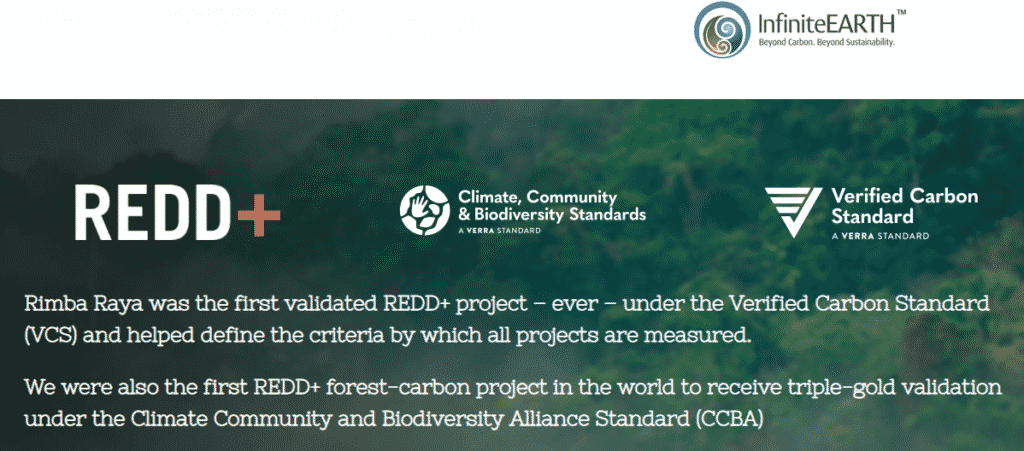

More down-to-earth NFT offset projects include the much-anticipated Save Planet Earth effort, the first to incorporate industry-leading Gold Standard offset verification into its NFT schemes.
Most of these efforts are in the early stages, and there’s little track record on which to assess their performance. But the ability to link carbon offsets to a blockchain offers a solution to a number of VCM problems, such as double counting credits. That promise alone will be enough to drive the NFT offset trend even further.
Trend 3: Blockchain-powered Carbon Exchanges
Carbon NFTs and tokenized offsets are often sold on blockchain-powered carbon exchanges. Abu Dahbi reached carbon neutrality by purchasing offsets on AirCarbon Exchange. The exchange offers offsets from around the globe, but tokenizes them on its own exchange. AirCarbon follows the same model as a traditional commodities exchange to facilitate carbon trading.
Nor is AirCarbon the only game in town. Some of the upcoming efforts follow all three major trends at once: Cambridge University’s proposed carbon exchange will be built on Tezos, another eco-friendly PoS blockchain.
Other projects often involve aspects of each trend. The CryptoCarbons NFT project produces art-inspired NFTs that are linked to already-generated offsets. But the project also allows users to request custom NFTs created just for them, and linked to a specific number of offsets.
Major crypto exchanges, like Binance, Coinbase, and others, may sell carbon-related tokens without being a dedicated crypto carbon exchange. Some of the biggest crypto carbon projects, like Klima, Toucan, and others, are only available on these centralized exchanges.
The crypto world is more aware of the need to be eco-friendly. This has led to an ecosystem primed to accept ambitious carbon offset NFT projects and tokenized offsets.
Leading Carbon Projects
Harness the blockchain, verify carbon credits, and solve two problems with one cutting-edge stone. All the projects on this list promise some variation on that idea; the only challenge is putting everything into practice in a market-friendly, cost-efficient way.
Here are current carbon crypto projects that are generating buzz and drawing some attention. Not all of them are equally successful, and few have established anything like a long-term track record. But all of them offer
Moss
Moss is two projects in one: a popular token (MCO2) and a climate-based NFT project. Both projects rely on the concept of tokenization to incentivize carbon offset production and carbon reduction.
The MCO2 token is available as an ERC-20 token on popular exchanges such as Coinbase. Purchase of the token (trading at $11.46 at time of writing) funds carbon offset projects. Most are based in and around the Amazon rainforest.
Moss doesn’t administer offset projects directly. Instead, they source high-quality offsets from other providers and tokenize them. Each project results in a given amount of offsets; Moss produces a set amount of tokens based on the projected offsets. One MC02 token = an offset for one tonne of CO2.
By burning MC02 tokens, Moss locks in offset projects permanently, reducing the overall supply of offsets in the market and boosting the price of remaining offsets.
The Moss Amazon NFT project operates a bit differently. Moss buys portions of the Amazon that are at-risk for deforestation. That land is then divided into 1-hectare portions, each roughly the size of a football field. The rights to those portions are digitized and tokenized as NFTs (Non-Fungible Tokens). Each NFT is unique and tied to a unique piece of property.
The Moss Amazon NFTs are actual land sales; proceeds from the sales fund further purchases, with 30% of the proceeds going to a preservation fund. That fund pays for patrolling and physically protecting the Amazon NFT holdings.
Moss distinctives:
- Amazon NFT based on actual ownership
- Due diligence for purchase and enforcement
- Part of the Celo Reserve, supporting a climate-based stablecoin (cUSD, cEUR)
- Brazil-based
KlimaDAO
Read the documentation.
KlimaDAO is nothing if not ambitious. Built on the common crypto carbon model of tokenized carbon offsets, Klima is also a DAO. As a Decentralized Autonomous Organization, KlimaDAO aims to boost the price of offsets on the VCM. This is done by purchasing carbon offsets, tokenizing them, and then selling or burning them to influence the market.


What sets Klima apart is its stated goal to be a carbon-backed currency, rather than simply a marker for credits held in reserve. To that end, all KLIMA tokens are backed 1:1 by reserve holdings in BCT, tokens issued by Toucan (see the next review).
Put more simply, to mint more KLIMA tokens (and increase supply), KlimaDAO needs to lock away BCT (Basic Carbon Tonne) in the treasury. KLIMA is backed by one BCT 1:1, and BCT is pegged to real-world offsets. Klima’s treasury functions as a blackhole for BCT and carbon offsets, removing them from the market and pushing the carbon price higher.
The DAO structure allows holders of KLIMA to take part in Klima’s governance. Holders can propose new measures and vote on their passage.
KlimaDAO Distinctives
- DAO structure and governance
- KLIMA as the currency of a new, carbon-based ecosystem
- Pegged to the BCT
Toucan
It’s not enough to describe Toucan.earth as a crypto carbon project; Toucan is more about bringing a number of related projects together, each with their own distinctives.
Toucan helps bridge carbon credits on-chain. Toucan links the Web3 architecture to the decarbonization push. Put another way, Toucan forms the base of a new, carbon-focused Web3 stack.
The core of Toucan’s project is the TCO2, which simply stands for Tokenized CO2. Each TCO2 represents one verified, real-world carbon credit. TCO2’s are semi-fungible, with unique information about each project encoded on-chain. The tokens are Verra verified, linking Toucan to one of the premier carbon offset standards.
The bridging process is complete once the BatchNFTs are approved by a Toucan verifier.
Approved BatchNFTs can then be fractionalized, creating TCO2 tokens. TCO2 tokens can be deposited into Toucan carbon pools, with depositors receiving carbon reference tokens like BCT in return. These pools aggregate liquidity and the carbon reference tokens provide a carbon building block for DeFi and ReFi developers.
Most projects planned for the Toucan stack won’t use the TCO2 directly. Trading TCO2 tokens one-for-one isn’t always possible, simply because the projects each token represents are different. To achieve the necessary liquidity for market projects such as Klima, the TCO2 tokens are fractionalized and pooled.
The first Toucan pool was the BCT pool, with Klima being the first user. The pools are gated, meaning each TCO2 token must have specific attributes to pass the gating criteria. Toucan and Pool Party members are able to set these factors for gating.
Toucan forms the foundation for a Web3 carbon crypto stack. Projects like KlimaDAO build on that stack. Tokenized carbon credits are the key.
Toucan.earth distinctives
- TCO2 token
- Token pooling and gating; BCT token
- Development of a Web3 carbon crypto stack
SavePlanetEarth
Read the whitepaper.
SavePlanetEarth’s self-description captures it all: a “carbon sequestration crypto project.” Structurally, SavePlanetEarth shares similarities with the Toucan/Klima project. The base of the project is tokenization of verified carbon credits, on which an entire ecosystem will be built – a currency and a blockchain powered by green energy.
There are a few key differences; the base token is $SPE, and the verification standard used for the carbon offsets is the Gold Standard, rather than Verra. The SPE project also relies more heavily on NFTs for the initial stage of project management, as well as something called “carbon credit certificates.”
The SPE roadmap includes a multi-level exchange, powered by the $SPE currency, where carbon credits can be bought and sold. It will also encourage external investment by allowing companies to trade their own credits on the exchange, once verified by SPE.
SPE distinctives
- Phantasma blockchain (with native SPE blockchain in development)
- Carbon-based exchange in roadmap
- Uses The Gold Standard verification
- Projects conform to all 17 of UN Sustainable Development Goals
Other notable projects:
Not every project is as well-developed as the ones above. Some are in the early stages, while others are more narrowly-focused. Here are a few significant projects to keep in mind.
AirCarbonExchange
AirCarbonExchange made the news by helping Abu Dhabi’s financial sector achieve full carbon neutrality. As an exchange, ACE sources carbon offset projects and tokenizes them into several different tokens, each tailored to a specific sector of the market. There’s no broader plan; AirCarbonExchange exists to promote the adoption of carbon crypto tokens as a commodity, and to trade them accordingly.
See how it works here.
Base
Base Carbon focuses on funding and support for developing crypto carbon projects. It also serves to source and verify projects for entry into Toucan’s TCO2 and BCT programs.
Details at the link.
CarbonTokenProject
Tokenization on the smallest scale – the trees in your backyard. CarbonTokenProject uses an innovative approach of human verification, data oracles, and the blockchain to tokenize trees. With its innovative approach, CarbonTokenProject is probably the first grassroots (treeroots?) carbon crypto initiative.
Read more here.
KumoDAO
Another crypto carbon currency, but with a twist: KumoDAO aims to be a USD-pegged stablecoin. Stablecoins pose unique technical challenges, but offer more ease of use with the traditional monetary system. KumoDAO is in the early stages, part of a wave of carbon crypto projects begun in the wake of KlimaDAO’s launch in 2021.
More info here.
News
Top 5 Crypto Pre-Sales for August 2024
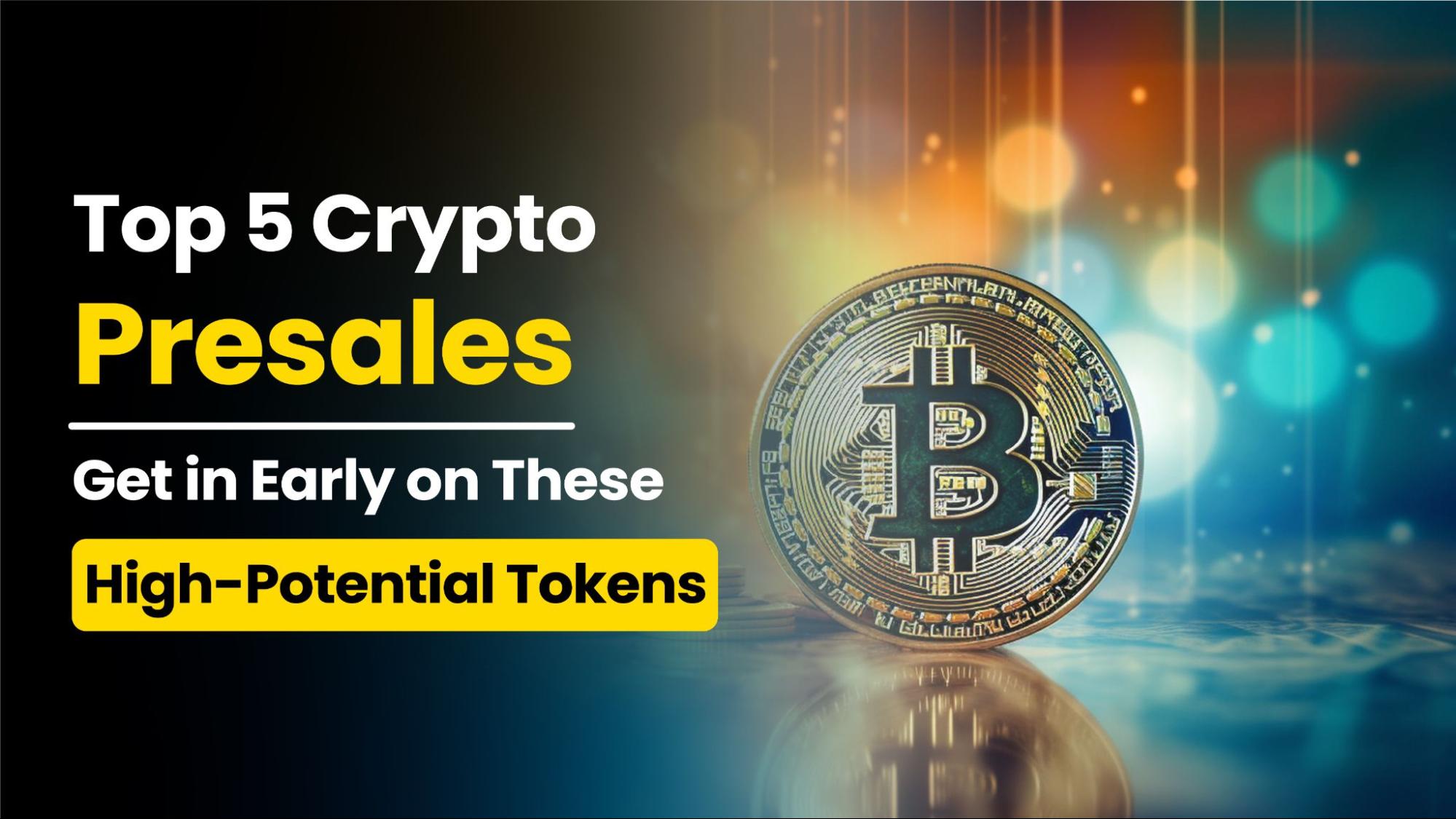
Have you heard about cryptocurrencies in 2011? Was Bitcoin so popular back then? Well, yes, some forward-thinking people saw its potential early and invested in BTC back then. Investors were skeptical about this new financial element; however, many took the risk and invested what they could risk in the cryptocurrency market.
Going through the list of top presales, we have identified and studied five of the main candidates that can change the game on the trading charts. These new opportunities promise the best returns and a great chance to buy tokens at affordable prices. While 5thScape is at the top of our recommendation, projects like DarkLume and Artemis Coin are pioneers in their respective categories.
Top 5 Crypto Pre-Sales to Add to Your Watchlist in 2024
Below we present the top five cryptocurrency pre-sales that you should consider adding to your investment watchlist.
- 5th Landscape (5SCAPE) – King of digital VR gaming with AR/VR elements
- Dark light (DLUME) – Virtual Metaverse for Social Exploration
- SpacePay (SPY) – Versatile Financial Payment Gateway for Seamless Transactions
- EarthMeta (EMT) – Replicating our planet on a virtual platform
- Artemis Coin (ARTMS) – NFT Marketplace for Digital Real Estate Investment
In-Depth Review: The Best Crypto Pre-Sales of 2024
Now, let’s take a closer look at these pre-sale events and how they can help investors make significant profits this year.
5th Landscape (5SCAPE)
The 5thScape project combines emerging technology using the fundamentals of virtual and augmented reality on the Ethereum platform using its native currency as 5SCAPE. Users of the token experience increased security and interactive gameplay in the digital space.
Here are the potential reasons why investors are admiring the 5thScape ecosystem:
Immersive Gameplay: With over five game titles, the platform is ready to amaze the audience with games ranging from archery, sports, battle and high-speed racing.
Innovative VR Content: 5thScape’s progress in the crypto-gaming space will contribute to the development of educational resources and other VR content on the website.
Motion Control Gadgets: This project is working hard to introduce VR devices such as headsets and gaming chairs with precise controls and high-resolution soundscapes to achieve the best immersive feeling while exploring the ecosystem.
Practical utility: 5SCAPE tokens stimulate participation in various activities and convert the ecosystem into economic value for investors.
Staking Opportunities: Acquiring 5SCAPE tokens after listing on exchanges can generate higher earnings
Free Giveaways and Prizes: The distribution of free coins and VR subscriptions attract investors.
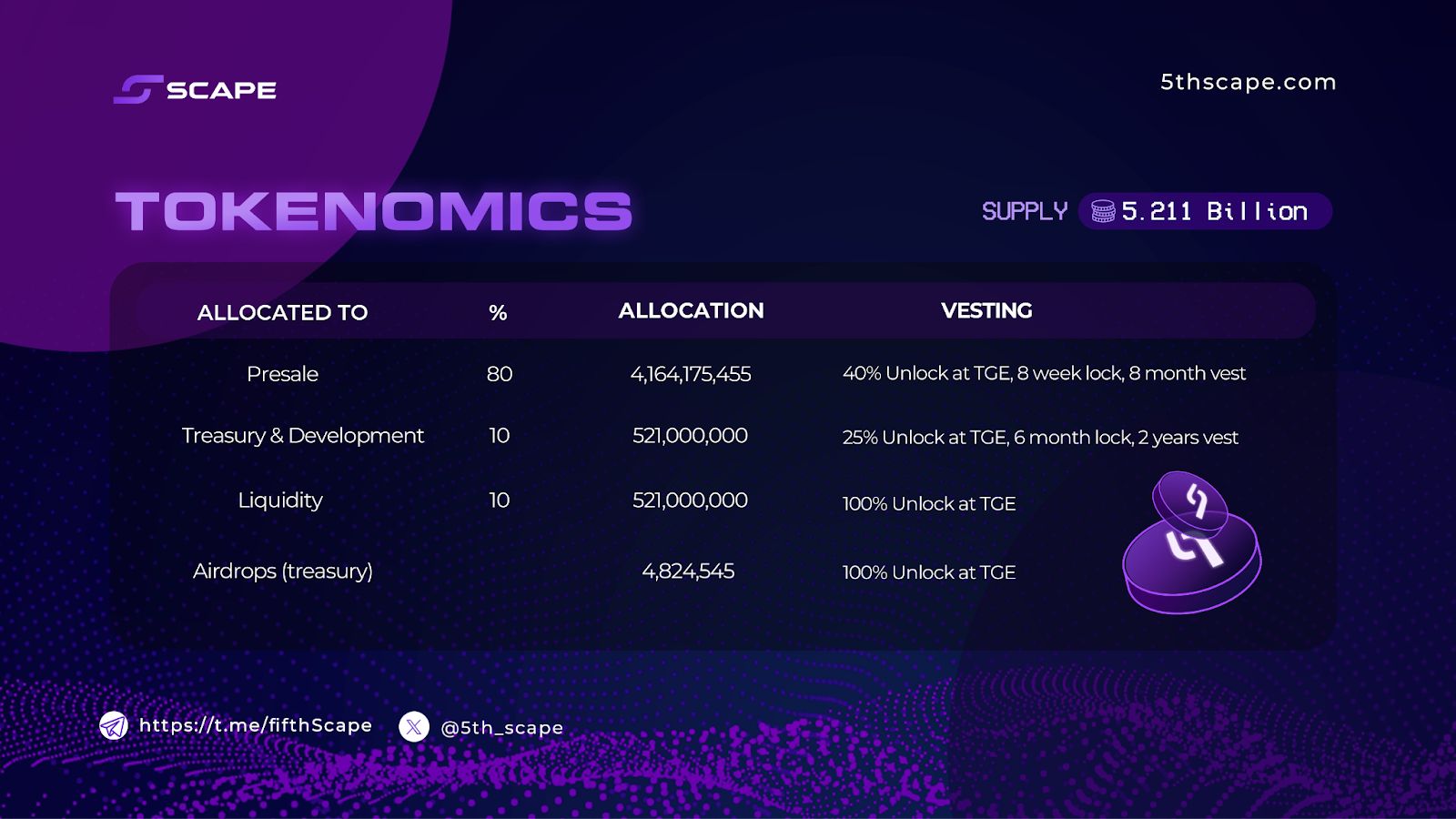
Visit 5thScape for more details>>
Dark Light (DLUME)
We just saw how 5thScape captures investors with its AR/VR digital landscape. DarkLume works on similar VR principles but has a completely new VR metaverse. Its presale is about to hit the $1 million mark and simultaneously increase fund inflows.
What are the specifics that allow DarkLume to lead the metaverse industry?
Native currency: The project has DLUME as a digital currency that can be used for in-game purchases or upgrades. These utility tokens also give their holders the right to vote on the development and expansion of the project.
Benefits of staking: Investors who want to hold and earn from this currency expect to multiply their funds after the stock market listing.
Exploratory Metaverse: Once you enter this world, there is no turning back. There are so many opportunities to find recreational activities and relieve stress. Walking through lush landscapes and stargazing at night can be a memorable experience. If you are a party animal, DarkLume’s virtual discos and clubs will win you over.
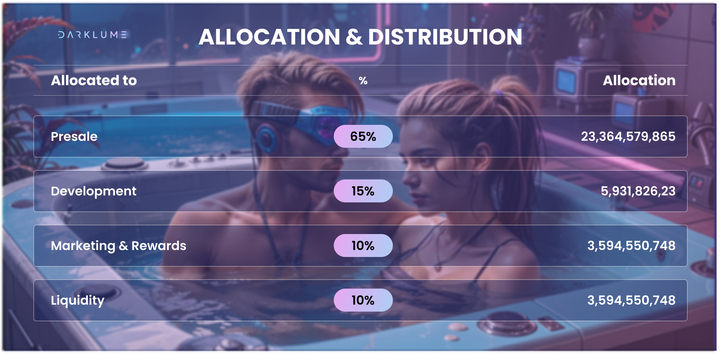
Visit DarkLume for more details>>
Payment for space (SPY)
Traditional financial setups face many challenges in daily transactions and are also expensive. To solve these concerns, Maxwell Bunting founded SpacePay by combining cryptocurrency payments and blockchain technology. The London-based startup makes online shopping and payments more seamless by integrating its network with existing card terminals, allowing users to make payments in any digital currency. Merchants can choose to receive payments in conventional currency without having to pay exorbitantly.
SpacePay has designed a user-friendly and convenient interface that supports over 325 crypto wallets. SPY, the native token of this platform, serves to enable all transactions within its ecosystem. Tokens can also be used to generate passive income through staking and additional community rewards.
EarthMeta (EMT)
EarthMeta is a virtual metaverse created to replicate our planet, Earth. It is listed as one of the best crypto pre-sales of 2024, with a focus on creating new NFT platforms and virtual assets in premium cities. The startup encourages users to own and govern virtual landscapes.
Cities are then further broken down into smaller assets such as landmarks, buildings, monuments, parks, schools, and more. NFTs can now be bought and sold in the project’s marketplace. Governors are eligible to earn 1% fees per transaction within their city. EMT token holders can also generate more at once with custom API integrations and participation in DAO activities.
Artemis (ARTMS)
Today we have covered a number of financial projects that you can consider along with 5thScape, the most promising VR coins of the decade. Artemis (ARTMS) is a financial platform that allows investors to transact and trade using its digital asset, ARTMS. Users can also lend, borrow, stake, save, and generate rewards from yield farming.
The project is about to enter Phase 4 of development which will see the launch of the Artemis Crypto System. This system is customized to facilitate a large number of secure and transparent crypto transactions. Cryptocurrency enthusiasts and professional entities can buy and sell products such as smartphones, bicycles and internet services using crypto payments. Early investors have great advantages until the project is available at a discounted price in the pre-sale.
Read this before investing in the next cryptocurrency market
Experienced investors know the factors to consider before investing in this dynamic market. Here are some points that beginners should remember before securing a position in the cryptocurrency universe.
- It is essential to verify the project details and the founders.
- Read and understand the whitepaper for all the technical information about the ICO, the roadmap and the mission of the project.
- The project roadmap will provide greater clarity on milestones and results achieved.
- Review the fundamentals of the new technologies involved in the development of the platform.
- Before investing in any cryptocurrency, carefully evaluate the benefits and risks to avoid losses and build a profitable portfolio.
Conclusion
5thScape ICO Offers Tokens at Deeply Discounted Prices. Once the presale is over, the token price will skyrocket 434% from the first round and promise 600x returns to early investors. Who wouldn’t want to be part of an innovative and growing VR ecosystem? Check your details, review all the documents and start investing in 5thScape now.
Time flies, and so does the $100,000 prize.
News
Best Upcoming Cryptocurrencies for Long-Term Profits: Turn $100 Into $1000 With These Picks
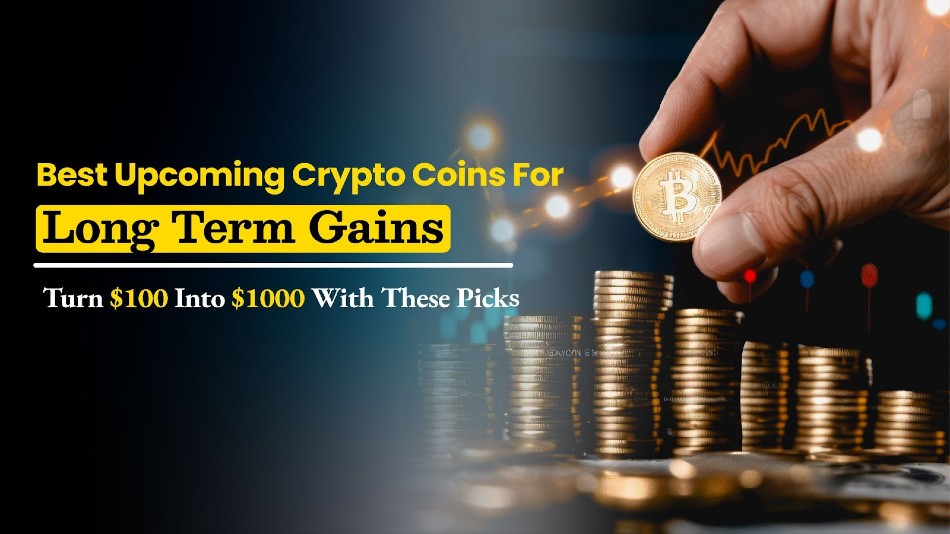
Have you ever wondered how much return Bitcoin has given to investors who bought this gold cryptocurrency a decade ago? In 2014, Bitcoin reached its significant milestone of $1,000 in the first month. Currently, it is trading at around $64k, which is an astonishing 6300% increase in the span of 10 years. No stock, no ETF could ever give you such monumental returns. This simply proves that the cryptocurrency market turns your dreams of investment returns into reality.
While the established giants are not giving so much returns now, the ball is in the court of upcoming cryptocurrencies that are based on the development of projects to provide up to 1000x returns in the near future. In this article, we will explore 5 upcoming cryptocurrencies for long-term earnings that can turn your $100 into $1000 – the only key is strategic investing with a lot of patience!
Best Upcoming Cryptocurrencies For Long Term Profits
Below we list the top 5 cryptocurrencies for long-term gains, which are set to give you returns of up to 1000 times in the coming times.
- 5th Landscape (5LANDSCAPE)
- Dark light (DISGUST)
- BlockDAG (BDAG)
- eTukTuk (TUK)
- WienerAI (WAI)
Take a deeper look at the background of these 5 upcoming cryptocurrencies for long-term gains and see why they could be viable options for your cryptocurrency portfolio.
1. 5° Landscape (5SCAPE)
5thScape is changing the face of entertainment by merging augmented and virtual reality with blockchain technology, offering a VR content ecosystem unlike any other destination on the internet. Its native token, 5SCAPE, is the cornerstone of this innovative ecosystem. With a limited supply of 5.21 billion tokens, 5SCAPE offers early investors a unique opportunity to participate in the growth of a potentially transformative platform.
Combining the immersive experiences of VR technology with a cryptocurrency that has a real-world use case, 5thScape presents a compelling investment proposition. The project’s focus on providing unparalleled user experiences, coupled with its potential to generate substantial returns, makes 5SCAPE an ideal new cryptocurrency to have in your portfolio for long-term gains.
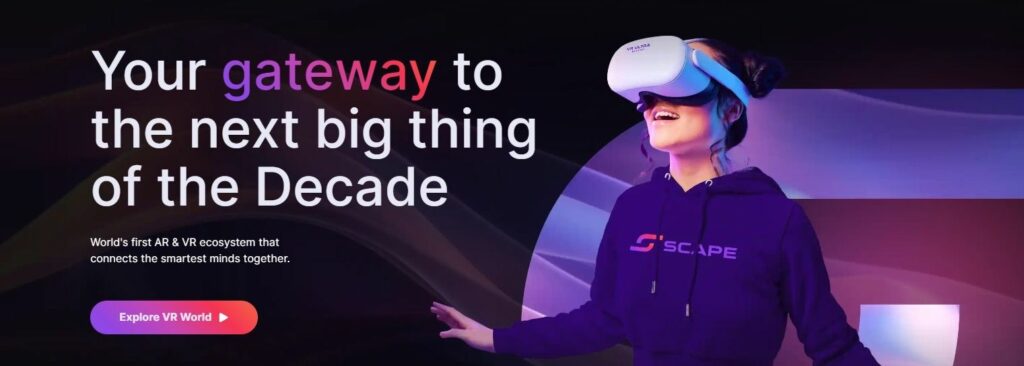
Click here to invest in 5thScape today >>
2. DarkLume (DLUME)
DarkLume is a meticulously crafted metaverse where users can experience a lavish digital lifestyle. At its core is the DLUME token, the currency that powers this virtual economy. By owning DLUME, users gain access to exclusive experiences, from owning virtual properties to attending high-society events and hosting virtual celebrations with their friends.
The metaverse is divided into virtual countries, each with its own citizenship requirements. To become a citizen, users must possess a specific amount of DLUME. Maintaining citizenship involves paying taxes in DLUME and creating a sense of community and responsibility among users.
Unlike other metaverse platforms that are limited to digital interactions only, DarkLume offers a wide range of activities, from leisure and entertainment to social interactions and exciting experiences. The platform’s focus on luxury ensures that every aspect of the metaverse is designed to exceed expectations. As DarkLume continues to grow, its DLUME token is expected to be in high demand. The metaverse concept is supported by renowned names such as Mark Zuckerberg and Satya Nadella. As it is the future of immersive socialization, the DLUME token is expected to appreciate in value over time.
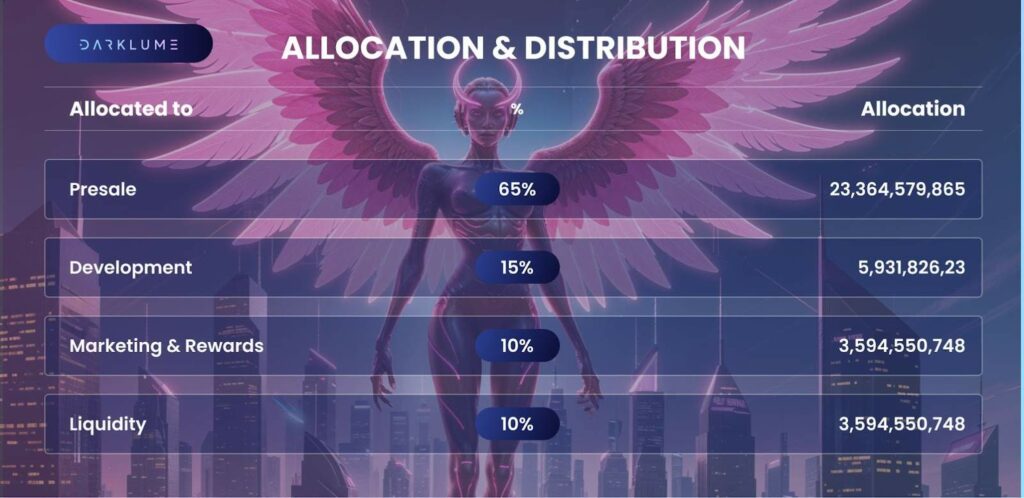
Explore DarkLume’s website to learn more
3. BlockDAG (BDAG)
BlockDAG is an innovative blockchain platform that uses a Directed Acyclic Graph (DAG) structure together with blockchain technology to offer fast transaction speeds, lower fees, and better scalability.
Unlike traditional blockchains that process transactions sequentially, BlockDAG processes them in parallel, which allows it to handle a much higher transaction volume. This approach makes BlockDAG an ideal platform for applications that require high throughput and low latency, such as DeFi, gaming, and IoT. Its presale has been a great success so far, and BlockDAG’s adaptability may be an optimistic sign for early investors in the BDAG token.
4. eTukTuk (TUK)
eTukTuk is a new leading crypto project that combines sustainable transportation with blockchain technology. Its main goal is to electrify the famous “tuk-tuk” industry, reducing carbon emissions that cause environmental damage while creating a thriving ecosystem. Its TUK token powers the entire platform.
One of the most notable features of eTukTuk is its Play-to-Earn (P2E) gameplay. Players can earn TUK tokens by completing challenges and missions in the game. This gamified approach not only makes the platform engaging but also incentivizes user participation in building the eTukTuk ecosystem. The primary utility of the TUK token is as a mode of payment for tuk-tuk drivers who use EV charging stations for their vehicles installed across Sri Lanka. The project will soon expand to other countries.
Overall, the value proposition of the TUK crypto token is strengthened by its utility within the platform. It can be used to purchase electric tuk-tuks, charge them at the network’s charging stations, and access various platform services. As eTukTuk adoption grows, demand for TUK tokens is expected to increase, potentially resulting in significant appreciation in the token’s value.
5. WienerAI (WAI)
WienerAI is a new blockchain-based platform that uses next-generation artificial intelligence (AI) technology to transform the cryptocurrency trading space. Its flagship product is an AI trading bot (with a sausage-themed mascot) designed to analyze market trends, identify potential opportunities, and execute trades with zero errors. With the power of AI, WienerAI provides users with a market edge in the complex and dynamic world of investing.
The platform’s native WAI token is a digital asset that underpins the entire ecosystem. Token holders can enjoy various benefits, including discounted trading fees, priority access to new features, and even a share of the platform’s profits. As WienerAI gains traction and its AI trading bot proves successful, the continued flow of demand for the WAI token will fuel its price.
Final Thoughts: Best Cryptocurrencies for Long-Term Profits
Each cryptocurrency project explored in this article brings a unique and innovative perspective to the blockchain industry. From the immersive worlds of 5thScape and DarkLume to the efficiency gains of BlockDAG and the sustainability focus of eTukTuk, not to mention WienerAI’s AI-powered trading bot with a new approach to investing, these projects are pushing the boundaries of what’s possible with blockchain technology.
While all of these projects are promising, 5thScape and DarkLume stand out as particularly interesting investment opportunities. The combination of 5thScape’s robust VR ecosystem tokenomics and unique AR/VR offeringstogether with the fantasy world of the DarkLume metaversehas the potential to appeal to a wide range of investors who may be entertainment lovers, not just cryptocurrency enthusiasts. Given their current presale stages, acquiring 5SCAPE and DLUME tokens at these early-bird prices could prove to be a strategic move for those seeking substantial returns.
This is a sponsored article. The opinions expressed are solely those of the sponsor and readers should conduct their own due diligence before taking any action based on the information presented in this article.
News
Avalanche Predicts ‘Most Bullish Unlock’ in Broader Market $1 Billion in Token Release

Token Unlocks data shows that several crypto projects:AvalancheWormhole, Aptos, SandboxArbitrum, Optimism and others are set to unlock around $1 billion worth of tokens in August.
Approximately $260 million will be allocated in the first three days of the month.
Crypto projects often schedule token unlocks to control the asset supply and prevent market oversaturation. This gradual release helps avoid significant sell-offs by early investors or team members who hold large amounts of crypto assets.
Wormhole and Avalanche to Release Over $400 Million in Tokens
The biggest news this month will be Wormhole and Avalanche.
On August 3rd, Hole in the walla cross-chain messaging protocol, will release 600 million tokens worth $151.67 million, or 33.33% of its circulating supply.
Avalanche will follow on August 20, unlocking 9.54 million AVAX tokens worth approximately $251 million, or 2.42% of its circulating supply.
The Token Unlocks dashboard shows that 4.5 million AVAX, worth $118.53 million, will go to the Avalanche team, 2.25 million AVAX, worth $59.27 million, will go to strategic partners, and the remainder will go to the Foundation and as an airdrop.
Farid Rached, former head of ecosystem growth at Avalanche, underlined that this planned unlock would be the most bullish in its history because “it is the last big step for the team and public/private investors.”
Other important unlocks
Sui, a layer 1 network, will unlock 64 million tokens worth $50 million, or 2.56% of its circulating supply, on August 1.
Similarly, decentralized exchange dYdX will issue 8.33 million tokens worth nearly $11 million, or 3.65% of its circulating supply. These tokens will be distributed to investors, founders, staff, and future employees.
Aptos will unlock 11.31 million APT tokens worth $74.64 million on August 12. These will be allocated to the Aptos community, top contributors, the foundation, and investors, with top contributors receiving the largest share: 3.96 million APT worth $26 million.
On August 14, Sandbox will release 205.6 million SAND tokens worth $66.75 million. This issuance will be split between the team, advisors, and a corporate reserve.
Finally, Ethereum’s layer 2 networks Referee AND Optimism will collectively unlock over $110 million worth of tokens by August 16 and 31, respectively.
Mentioned in this article
Latest Alpha Market Report
News
Big Tech Beats Bitcoin (BTC) as Trump’s Trade Cancellation Weakens Token
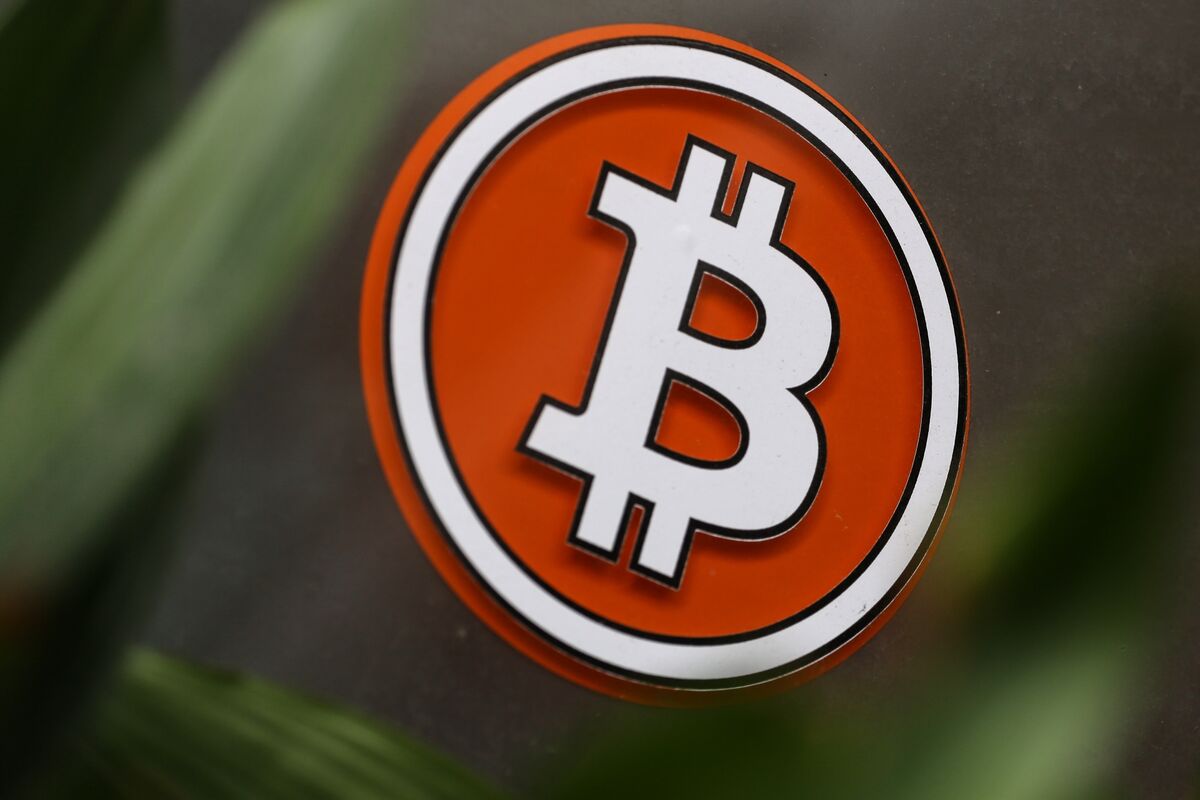
Bitcoin has failed to join the cross-asset rally fueled by dovish comments from the Federal Reserve, as the tight US election race casts doubt on Donald Trump’s ability to implement his pro-cryptocurrency agenda.
The digital asset slipped 2.4% on Wednesday, tracking a Fed-fueled surge in an index of the Magnificent Seven large-cap tech stocks by one of the widest margins in 2024. The token fell further on Thursday, changing hands at $63,750 by 6:10 a.m. in London.
-

 Videos7 months ago
Videos7 months agoMoney is broke!! The truth about our financial system!
-

 News6 months ago
News6 months agoMore Crypto AI Alliances Emerge Following $7.5 Billion Token Merger — TradingView News
-

 News6 months ago
News6 months agoOver 1 million new tokens launched since April
-
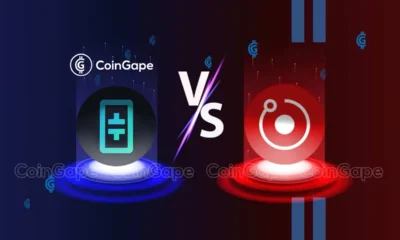
 Altcoins6 months ago
Altcoins6 months agoRender vs. Theta; Which DePIN Altcoin to buy in May
-

 NFTs7 months ago
NFTs7 months agoSurprisingly, Bored Apes is now laying off employees as the NFT market disintegrates
-

 Videos6 months ago
Videos6 months agoFantom: Potential FTM Price and BIG Updates – The Latest!!
-

 Memecoins6 months ago
Memecoins6 months agoChatGPT Analytics That Will Work Better in 2024
-

 Videos6 months ago
Videos6 months agoRecession soon?? What this means for you and your wallet!!
-

 NFTs7 months ago
NFTs7 months agoTrump endorses Bible line – after selling shoes, NFTs and more
-

 Videos6 months ago
Videos6 months agoCrypto News: ETH ETFs, Pro-Crypto Politics, UNI, DOGE & MORE!
-

 Altcoins6 months ago
Altcoins6 months agoAltcoin Investments to create millionaires in 2024
-
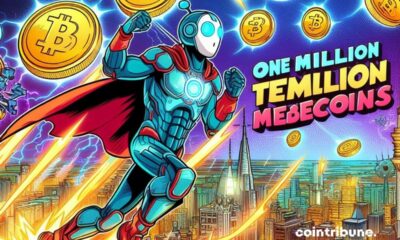
 Memecoins6 months ago
Memecoins6 months agoWhen memecoins reign supreme in the ecosystem!





